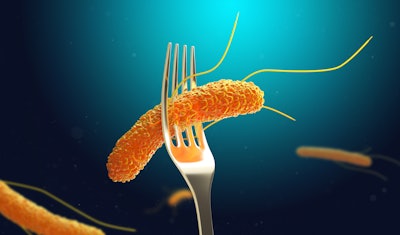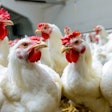
Salmonella control in poultry in the U.S. has come under intense regulatory scrutiny over the past few years. Would it make sense to shift the industry’s food safety mindset to be more like the EU?
U.S. regulatory changes
The U.S. Department of Agriculture’s (USDA) Food Safety and Inspection Service (FSIS) declared Salmonella an adulterant in raw breaded stuffed chicken products when they exceed a specific threshold (1 colony forming unit (CFU) per gram or higher) for Salmonella contamination in April 2024.
The action followed previously announced efforts to reduce Salmonella associated with poultry products, with a focus on “encouraging preharvest controls to reduce Salmonella contamination coming into the slaughterhouse.”
How the EU regulates Salmonella
The EU has a slightly different mindset than the U.S. when it comes to Salmonella guidelines, said Twan Koenen, undine process expert, Innovative Water Concepts.
From his point of view, in the U.S., the burden is on the consumer to avoid Salmonella, whereas EU regulations call Salmonella an adulterant in all poultry products, with a focus more on detecting Salmonella before it reaches foodservice or retail through stringent testing.
“In the EU, I think we very strongly believe that U.S. should know and learn under what circumstances and what limits the European processors have to meet,” he advocated.
The EU also requires the use of only potable water during the cleaning stage of poultry processing, although there can be significant differences from country to country within the EU in how this regulation is enforced. Salmonella can be present in feed particles, the intestines, feathers and the skin, as well as other parts of the bird, making the cleaning stage an essential step for food safety.
My conclusion
I’m no regulatory expert, but in my opinion, shifting the burden of food safety toward the poultry industry makes sense. Consumers often struggle with basic food safety concepts – we all remember when the Nyquil Chicken trend got so bad that the U.S. Food & Drug Administration (FDA) felt it needed to step in.



















